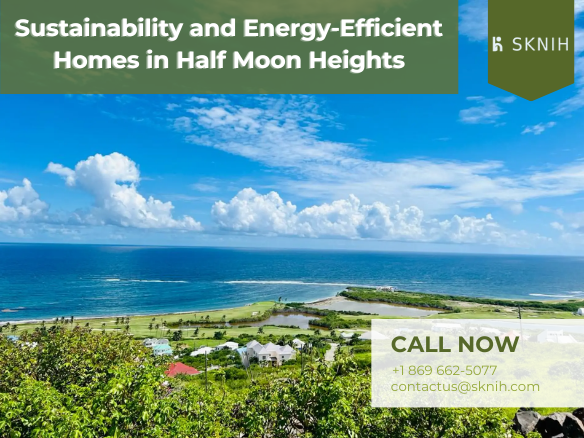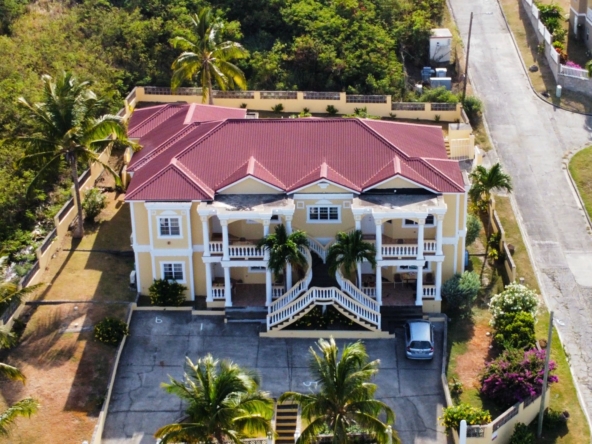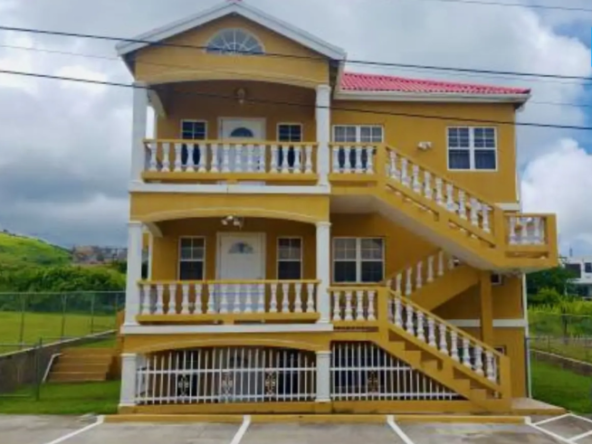The quest for sustainability has permeated every industry, with real estate being no exception. In Half Moon Heights, the emphasis on building energy-efficient homes has gained significant traction. This community is leading the way in integrating sustainable practices into residential development, making it a model for other regions to follow. This blog explores the various aspects of sustainability and energy efficiency in homes within Half Moon Heights, highlighting the benefits, features, and future trends in this growing field.
The Importance of Sustainability in Real Estate
Sustainability in real estate is not just a trend but a necessity. With the increasing awareness of climate change and environmental degradation, sustainable practices are essential for reducing the carbon footprint and conserving natural resources. Energy-efficient homes are designed to minimize energy consumption, thereby reducing greenhouse gas emissions and lowering utility costs for homeowners.
Key Benefits:
- Environmental Impact: Sustainable homes reduce the reliance on non-renewable energy sources, decreasing overall environmental impact.
- Economic Savings: Energy-efficient homes lead to significant savings on utility bills due to reduced energy consumption.
- Health Benefits: Homes built with sustainable materials and designs often result in better indoor air quality, contributing to the health and well-being of residents.
- Increased Property Value: Energy-efficient homes are increasingly in demand, leading to higher property values and quicker sales.
Energy-Efficient Features in Half Moon Heights Homes
Half Moon Heights has become a beacon of energy efficiency through the adoption of several key features and practices in home design and construction. These features are aimed at reducing energy consumption, enhancing comfort, and promoting sustainable living.
- Solar Panels Solar energy is a cornerstone of sustainability in Half Moon Heights. Many homes are equipped with solar panels, which convert sunlight into electricity. This renewable energy source significantly cuts down on reliance on traditional power grids, reducing both costs and carbon emissions.
- High-Performance Insulation Proper insulation is crucial for maintaining indoor temperature without over-reliance on heating or cooling systems. Homes in Half Moon Heights utilize high-performance insulation materials that ensure minimal heat loss in winter and reduce cooling needs in summer.
- Energy-Efficient Windows and Doors Windows and doors are common sources of energy loss. Energy-efficient models are designed to prevent heat transfer, thereby maintaining indoor temperatures more effectively. Features such as double glazing, low-E coatings, and insulated frames are standard in Half Moon Heights homes.
- Smart Home Technology The integration of smart home technology allows residents to monitor and control energy usage efficiently. Smart thermostats, lighting systems, and appliances can be programmed to operate only when needed, significantly reducing unnecessary energy consumption.
- Water Conservation Systems Water conservation is another critical aspect of sustainability. Homes in Half Moon Heights often include features like low-flow fixtures, rainwater harvesting systems, and efficient irrigation systems for landscaping, ensuring minimal water wastage.
- Sustainable Building Materials Using sustainable building materials is essential for reducing the environmental footprint of construction. Homes in Half Moon Heights are often built with materials like recycled steel, bamboo, and reclaimed wood, which are not only sustainable but also durable and aesthetically pleasing.
The Role of Sustainable Landscaping
Landscaping plays a significant role in the overall sustainability of a home. In Half Moon Heights, landscaping practices are designed to complement the energy efficiency of the homes. Native plants, which require less water and maintenance, are commonly used. Additionally, xeriscaping, a landscaping method that reduces or eliminates the need for irrigation, is increasingly popular.
Key Practices:
- Native Planting: Using plants that are indigenous to the area reduces water usage and supports local biodiversity.
- Rain Gardens: These gardens are designed to absorb and filter rainwater, reducing runoff and promoting groundwater recharge.
- Green Roofs: Some homes incorporate green roofs, which provide insulation, reduce stormwater runoff, and create habitats for wildlife.
The Impact of Government Policies and Incentives
Government policies and incentives play a crucial role in promoting the adoption of sustainable and energy-efficient practices. In Half Moon Heights, several federal, state, and local programs support homeowners in making their properties more energy-efficient.
Incentives and Programs:
- Federal Tax Credits: The federal government offers tax credits for the installation of renewable energy systems such as solar panels and geothermal heat pumps.
- State Rebates: Many states provide rebates for energy-efficient home improvements, including upgrading insulation, windows, and HVAC systems.
- Local Grants: Local governments and utilities often offer grants and low-interest loans for energy-efficient retrofits and renewable energy installations.
Future Trends in Sustainable and Energy-Efficient Homes
As technology and awareness continue to evolve, several trends are emerging in the field of sustainable and energy-efficient homes. These trends are set to further enhance the environmental performance and livability of homes in Half Moon Heights.
- Net-Zero Energy Homes Net-zero energy homes produce as much energy as they consume over a year, primarily through renewable energy sources. This is achieved through a combination of energy-efficient construction and renewable energy systems. Half Moon Heights is seeing a growing interest in net-zero energy homes as the ultimate goal of sustainable living.
- Passive House Design Passive house design is an advanced approach to building homes that require minimal energy for heating and cooling. This is achieved through rigorous insulation, airtight construction, and strategic placement of windows for optimal solar gain. Passive houses are becoming more popular in Half Moon Heights for their exceptional energy performance.
- Community Energy Projects Community energy projects, such as shared solar farms or microgrids, allow neighborhoods to generate and share renewable energy. These projects enhance energy security, reduce costs, and promote a sense of community sustainability. Half Moon Heights is exploring such initiatives to further its commitment to renewable energy.
- Green Building Certifications Green building certifications like LEED (Leadership in Energy and Environmental Design) and ENERGY STAR are gaining prominence. Homes that achieve these certifications meet stringent criteria for sustainability and energy efficiency, assuring buyers of their environmental performance.
Challenges and Solutions
Despite the benefits and advancements, there are challenges in adopting sustainable and energy-efficient practices. These include the initial costs, the need for specialized knowledge, and regulatory hurdles. However, these challenges can be addressed through:
- Education and Awareness: Increasing awareness among homeowners and builders about the long-term benefits and available incentives for sustainable practices.
- Financial Incentives: Expanding financial incentives to offset initial costs and encourage wider adoption of energy-efficient technologies.
- Policy Support: Strengthening regulations and policies that mandate or encourage sustainable construction practices.
Conclusion
Half Moon Heights is a shining example of how communities can embrace sustainability and energy efficiency in residential development. By integrating advanced technologies, sustainable materials, and eco-friendly practices, this community is setting a benchmark for future developments. The emphasis on reducing environmental impact, enhancing comfort, and providing economic benefits makes energy-efficient homes a desirable and responsible choice for today’s homeowners. As trends continue to evolve, Half Moon Heights will undoubtedly remain at the forefront of sustainable living, inspiring other communities to follow suit.
FAQ
Q: What are the benefits of energy-efficient homes?
A: Energy-efficient homes reduce utility bills, lower environmental impact, improve indoor air quality, and increase property values.
Q: How do solar panels contribute to energy efficiency?
A: Solar panels generate electricity from sunlight, reducing reliance on non-renewable energy sources and lowering electricity bills.
Q: What is passive house design?
A: Passive house design focuses on highly efficient insulation, airtight construction, and optimal solar gain to minimize energy use for heating and cooling.
Q: What incentives are available for sustainable home improvements?
A: Incentives include federal tax credits, state rebates, and local grants for energy-efficient upgrades and renewable energy installations.
Q: How does smart home technology enhance energy efficiency?
A: Smart home technology allows for the efficient control and monitoring of energy use through programmable thermostats, lighting systems, and appliances.
By continuing to innovate and prioritize sustainability, Half Moon Heights is leading the way toward a greener and more energy-efficient future.



